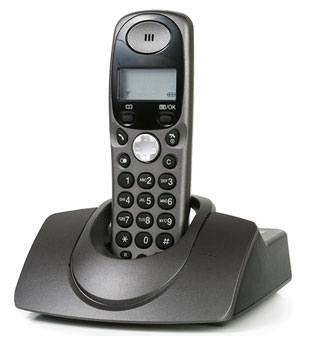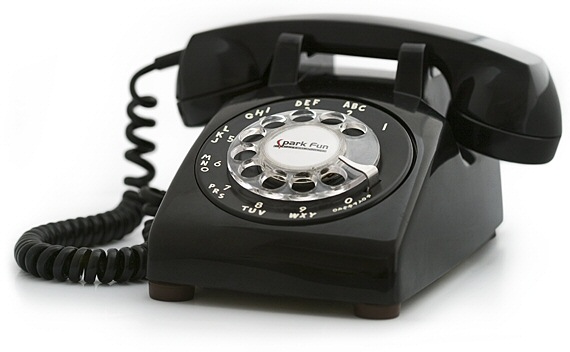Source:- Google.com.pk
Radio Common Carrier [14] or RCC was a service introduced in the 1960s by independent telephone companies to compete against AT&T's IMTS. RCC systems used paired UHF 454/459 MHz and VHF 152/158 MHz frequencies near those used by IMTS. RCC based services were provided until the 1980s when cellular AMPS systems made RCC equipment obsolete.
Some RCC systems were designed to allow customers of adjacent carriers to use their facilities, but equipment used by RCCs did not allow the equivalent of modern "roaming" because technical standards were not uniform. For example, the phone of an Omaha, Nebraska–based RCC service would not be likely to work in Phoenix, Arizona. Roaming was not encouraged, in part, because there was no centralized industry billing database for RCCs. Signaling formats were not standardized. For example, some systems used two-tone sequential paging to alert a mobile of an incoming call. Other systems used DTMF. Some used Secode 2805, which transmitted an interrupted 2805 Hz tone (similar to IMTS signaling) to alert mobiles of an offered call. Some radio equipment used with RCC systems was half-duplex, push-to-talk LOMO equipment such as Motorola hand-helds or RCA 700-series conventional two-way radios. Other vehicular equipment had telephone handsets and rotary dials or pushbutton pads, and operated full duplex like a conventional wired telephone. A few users had full-duplex briefcase telephones (radically advanced for their day)
At the end of RCC's existence, industry associations were working on a technical standard that would have allowed roaming, and some mobile users had multiple decoders to enable operation with more than one of the common signaling formats (600/1500, 2805, and Reach). Manual operation was often a fallback for RCC roamers.In December 1947, Douglas H. Ring and W. Rae Young, Bell Labs engineers, proposed hexagonal cells for mobile phones in vehicles.[15]At this stage, the technology to implement these ideas did not exist, nor had the frequencies been allocated. Two decades would pass before Richard H. Frenkiel, Joel S. Engel and Philip T. Porter of Bell Labs expanded the early proposals into a much more detailed system plan. It was Porter who first proposed that the cell towers use the now-familiar directional antennas to reduce interference and increase channel reuse (see picture at right) [16] Porter also invented the dial-then-send method used by all cell phones to reduce wasted channel time.
In all these early examples, a mobile phone had to stay within the coverage area serviced by one base station throughout the phone call, i.e. there was no continuity of service as the phones moved through several cell areas. The concepts of frequency reuse and handoff, as well as a number of other concepts that formed the basis of modern cell phone technology, were described in the late 1960s, in papers by Frenkiel and Porter. In 1970 Amos E. Joel, Jr., a Bell Labs engineer,[17] invented a "three-sided trunk circuit" to aid in the "call handoff" process from one cell to another. His patent contained an early description of the Bell Labs cellular concept, but as switching systems became faster, such a circuit became unnecessary and was never implemented in a system.
A cellular telephone switching plan was described by Fluhr and Nussbaum in 1973,[18] and a cellular telephone data signaling system was described in 1977 by Hachenburg et al.
Some RCC systems were designed to allow customers of adjacent carriers to use their facilities, but equipment used by RCCs did not allow the equivalent of modern "roaming" because technical standards were not uniform. For example, the phone of an Omaha, Nebraska–based RCC service would not be likely to work in Phoenix, Arizona. Roaming was not encouraged, in part, because there was no centralized industry billing database for RCCs. Signaling formats were not standardized. For example, some systems used two-tone sequential paging to alert a mobile of an incoming call. Other systems used DTMF. Some used Secode 2805, which transmitted an interrupted 2805 Hz tone (similar to IMTS signaling) to alert mobiles of an offered call. Some radio equipment used with RCC systems was half-duplex, push-to-talk LOMO equipment such as Motorola hand-helds or RCA 700-series conventional two-way radios. Other vehicular equipment had telephone handsets and rotary dials or pushbutton pads, and operated full duplex like a conventional wired telephone. A few users had full-duplex briefcase telephones (radically advanced for their day)
At the end of RCC's existence, industry associations were working on a technical standard that would have allowed roaming, and some mobile users had multiple decoders to enable operation with more than one of the common signaling formats (600/1500, 2805, and Reach). Manual operation was often a fallback for RCC roamers.In December 1947, Douglas H. Ring and W. Rae Young, Bell Labs engineers, proposed hexagonal cells for mobile phones in vehicles.[15]At this stage, the technology to implement these ideas did not exist, nor had the frequencies been allocated. Two decades would pass before Richard H. Frenkiel, Joel S. Engel and Philip T. Porter of Bell Labs expanded the early proposals into a much more detailed system plan. It was Porter who first proposed that the cell towers use the now-familiar directional antennas to reduce interference and increase channel reuse (see picture at right) [16] Porter also invented the dial-then-send method used by all cell phones to reduce wasted channel time.
In all these early examples, a mobile phone had to stay within the coverage area serviced by one base station throughout the phone call, i.e. there was no continuity of service as the phones moved through several cell areas. The concepts of frequency reuse and handoff, as well as a number of other concepts that formed the basis of modern cell phone technology, were described in the late 1960s, in papers by Frenkiel and Porter. In 1970 Amos E. Joel, Jr., a Bell Labs engineer,[17] invented a "three-sided trunk circuit" to aid in the "call handoff" process from one cell to another. His patent contained an early description of the Bell Labs cellular concept, but as switching systems became faster, such a circuit became unnecessary and was never implemented in a system.
A cellular telephone switching plan was described by Fluhr and Nussbaum in 1973,[18] and a cellular telephone data signaling system was described in 1977 by Hachenburg et al.








No comments:
Post a Comment